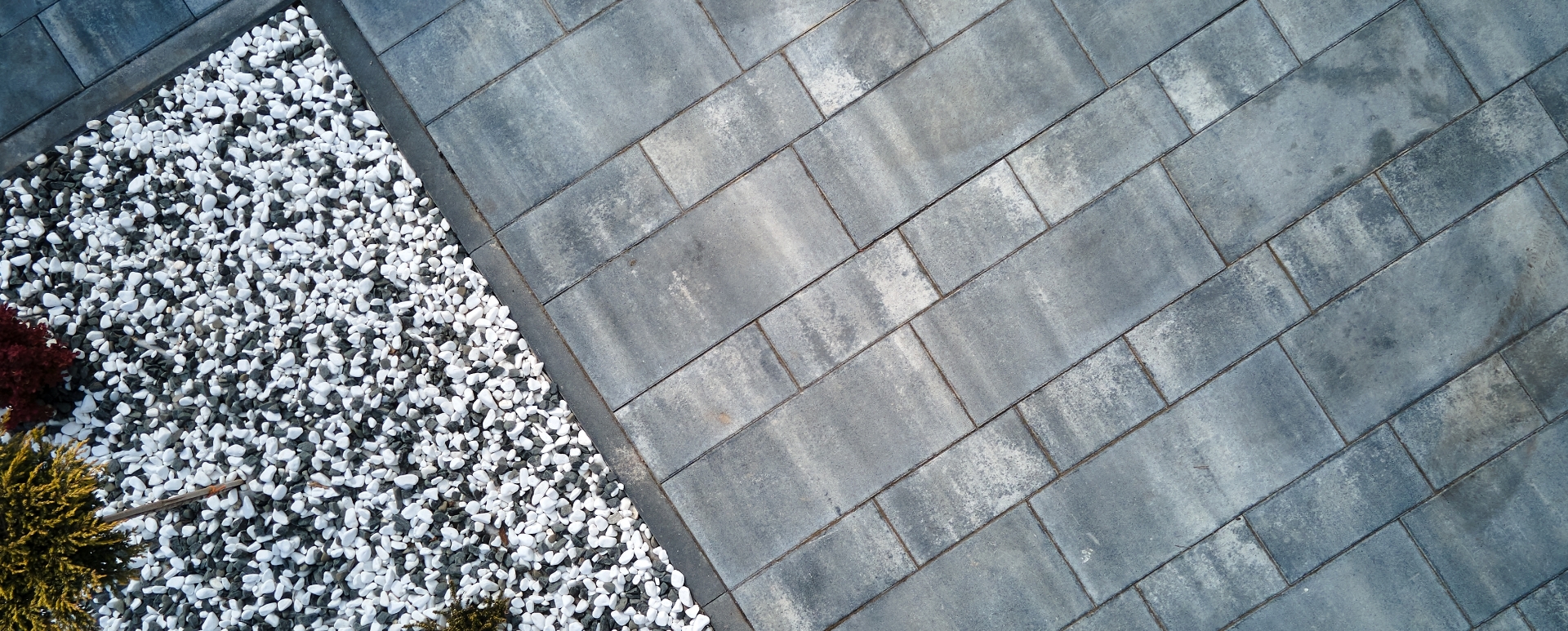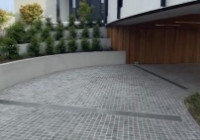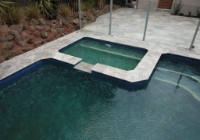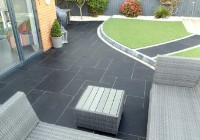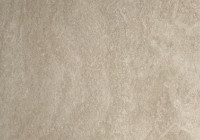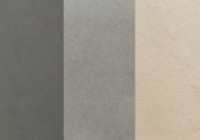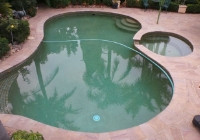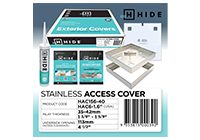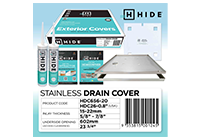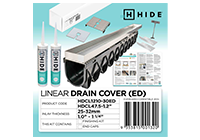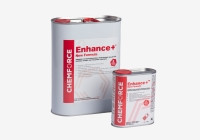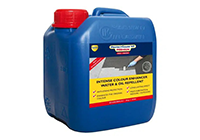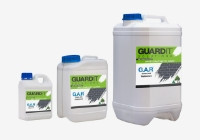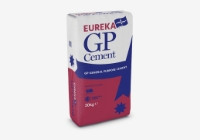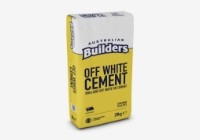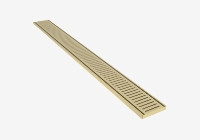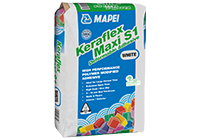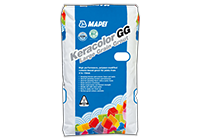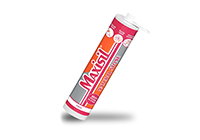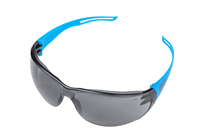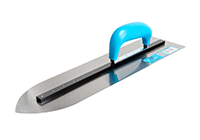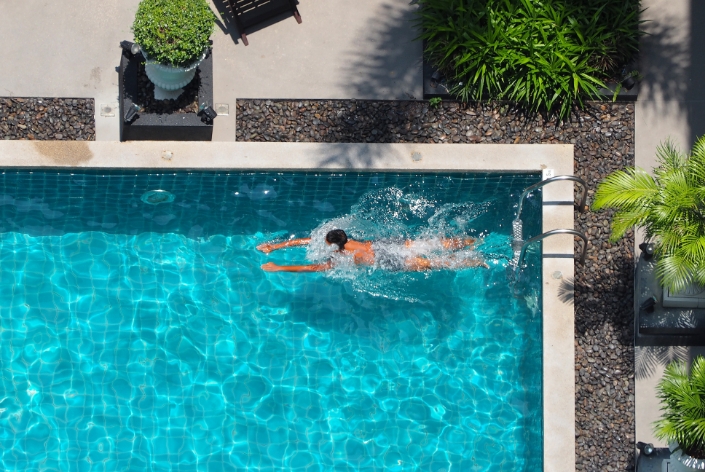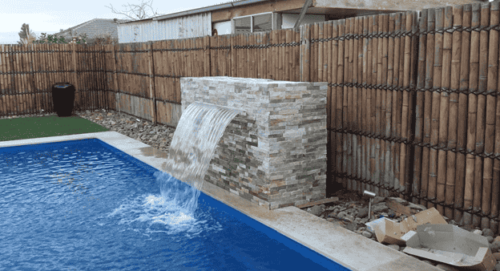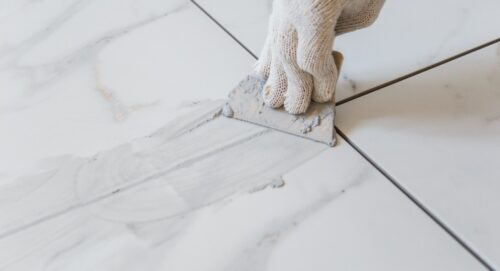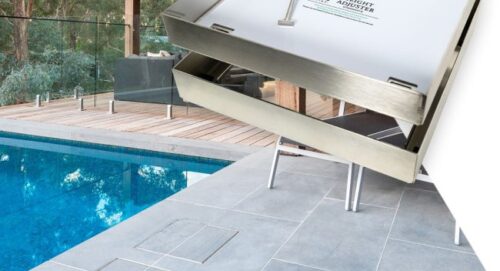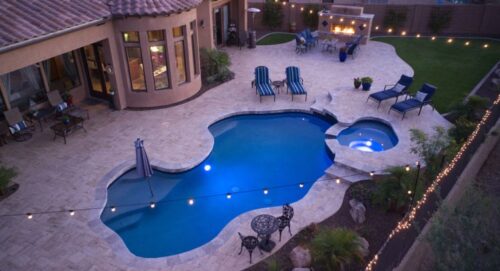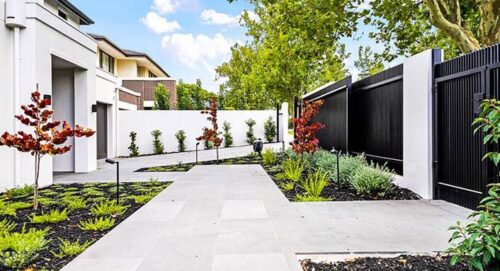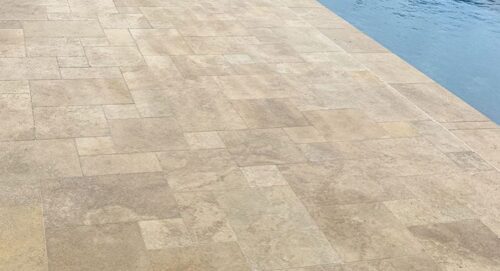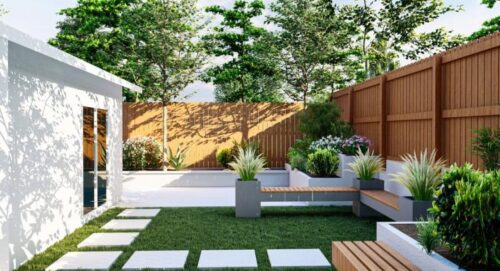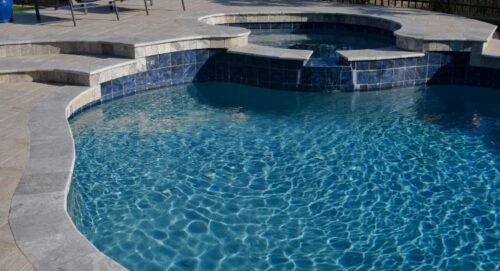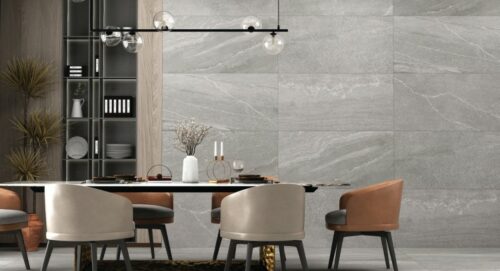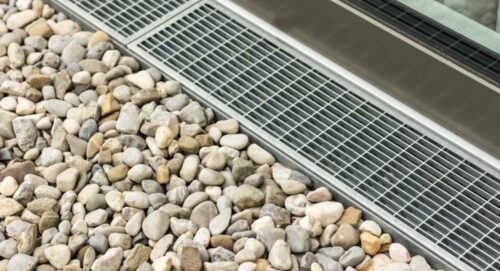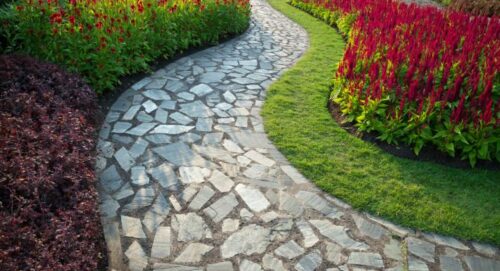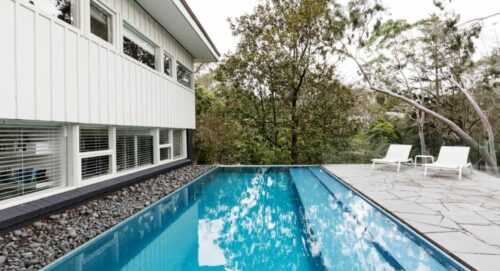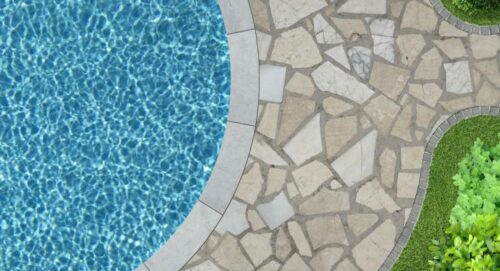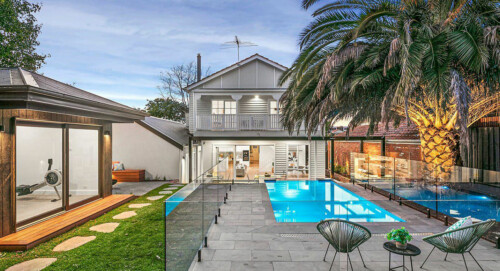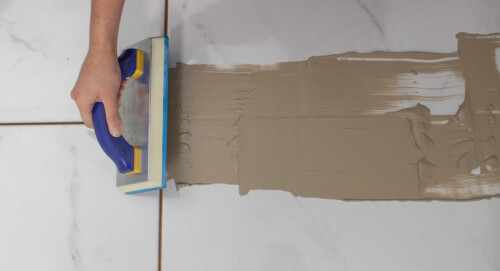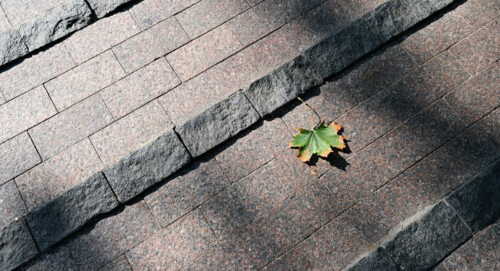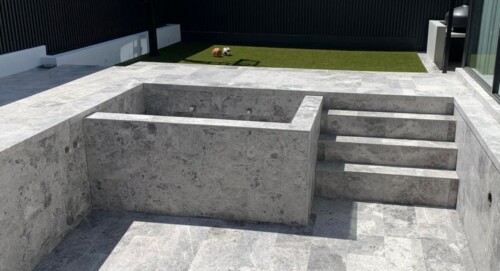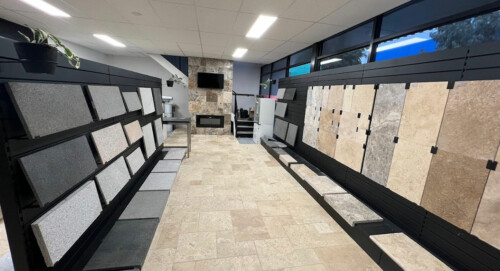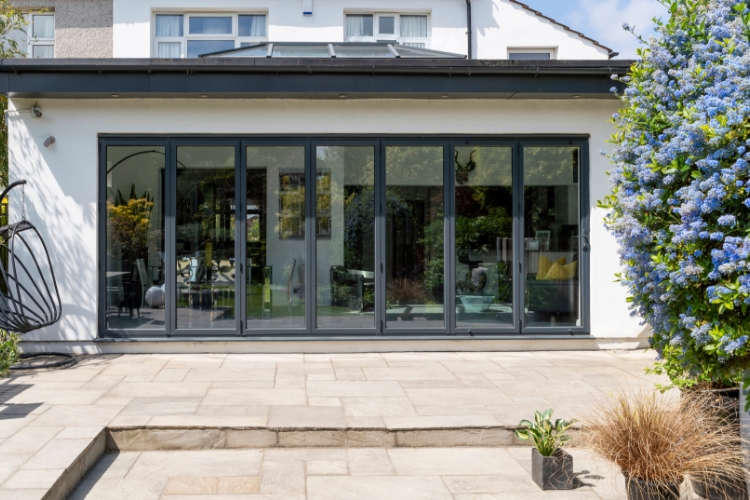
Are you looking to upgrade your home or increase your property value? According to this article by Your Home, you can reduce your energy usage and add thermal comfort during the winter with concrete slabs, and there is much more use for paving interiors. Sandstone and limestone are known to be the most durable building material.
This Earth Resources report states that dimensional stone is a natural stone cut to specific dimensions for building, construction, and monumental industries. Sandstone, limestone, and marble have been widely used for buildings in Victoria.
Whether you're a family of five hoping to redesign your pool for the summer or have just built a property and want to deck out the inside, limestone and sandstone pavers can make a difference.
This article will explore both types of pavers, what will look best for your outdoor spaces, and how to decide on what natural stone pavers work for you.
What are Limestone and Sandstone Pavers?
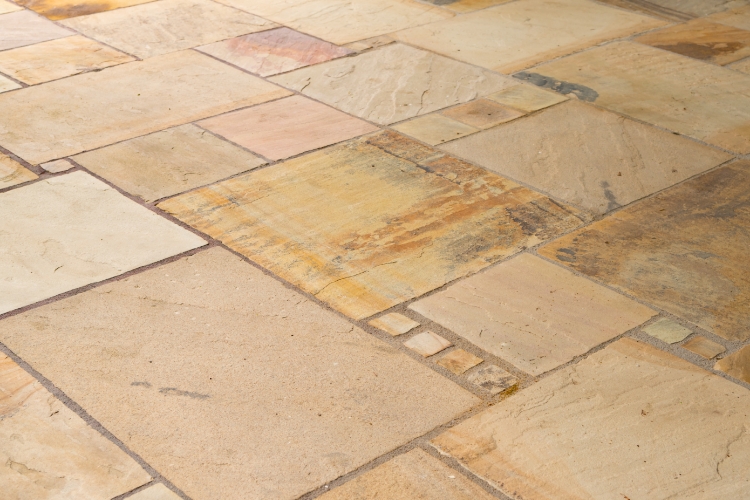
Let's examine the scientific definitions of limestone and sandstone and compare both paver types!
Limestone pavers
Limestone is made from calcite and aragonite, which are different from natural calcium carbonates. Where do these calcites come from? The source of calcites determines the type of limestone, as not all are identical. Biological, non-biological, and chemical processes can form these calcites.
Underwater environments provide biological sources of calcites, such as the debris living in organisms in freshwater or marine animals.
Hot springs–which are mostly in the mountains or caves–are an ideal environment for calcite formation and deposition. Travertine is part of this limestone category of rocks and a bi-product of these chemical processes.
Sandstone pavers
As a siliceous type of rock, sandstone pavers are created from sand particles such as quartz and feldspar. The formation process involves the sedimentation of quartz crystals, the formation of cement and matrix, and the formation of pores within this mass.
From a geological perspective, sandstone is classified based on its dominance of minerals in the clastic framework grains and biding/cement material.
Clastic framework grains include quartz, feldspar, and lithic, whereas cementing material covers siliceous cement with silica, calcareous cement with calcites, argillaceous cement with clay, and ferruginous cement with ferrous.
Sandstone and Limestone – What Are The Differences?
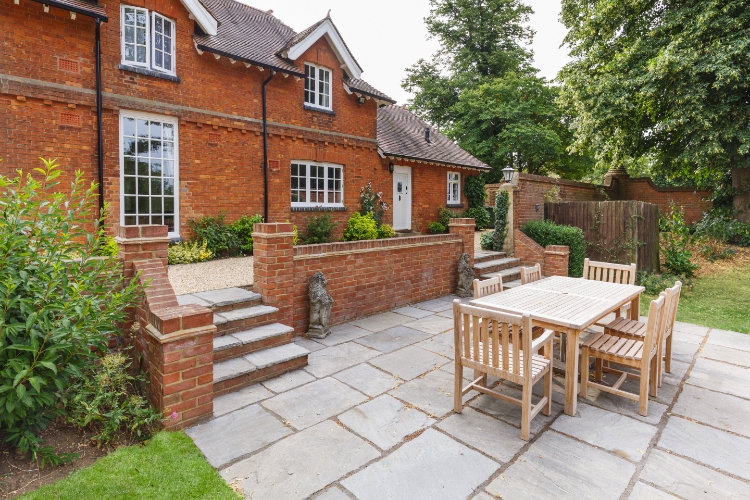
What are the clear differences between these natural stones? Let’s go over them one by one.
Properties
On a scientific basis, limestone and sandstone have different properties.
Limestone
Limestone as a sedimentary rock has a hardness of 2 to 4 Moh's scale and a 1.95 to 2.55 mg/m3 density. Regarding water absorption, limestone has 3% to 15% absorption capabilities. Porosity is 5% to 30%.
Limestone has a compressive strength of 30 to 60MPa, with flexural strength of 2 to 10MPa. As for textures, limestone is commonly plain and stable, with the look-feel of weathering.
The colours of limestone are mainly grey and tan, so they are excellent for neutral designs.
Sandstone
Sandstone has a 6 to 7 Moh scale hardness and a 2.0 to 2.35 mg/m3 density. With water absorption, sandstone has 3% to 20% capabilities, whereas porosity is 10% to 35%.
Sandstone has a compressive strength of 25 to 100MPa, with flexural strength of 3 to 10MPa. Textures vary and are abstract in grains, veins, and patterns. Often, with bumps or waves, the colours are mostly brown, red, and yellow.
Planning a project but aren’t sure of the finer details? Paver Shop can help you with natural stone pavers, shower grates, Mapei grout adhesives, and a collection of pavers in Melbourne.
Weather resistance
Limestone. As a member of the calcite rock family, limestone pavers are less resistant to harsh weather fluctuations and are prone to damage when compared to sandstone.
Sandstone. With a 0.92 heat capacity, sandstone is a low porous variety that is sturdy and doesn't fade in colour or texture from wild weather.
Acid resistance
As a calcite rock, limestone calcium components often react with strong acids. If you decide on limestone pavers, take precautions against staining and avoid washing with acidic solutions.
Sandstone is a siliceous rock that is acid-neutral when faced with chemical reactions. Strong acids can damage sandstone pavers, but they are often mild. If you're ever in doubt, here is some insight on choosing the right paving material.
Applications
Limestone is excellent for applications such as patios, decks, paths, steps, and general landscaping projects. Exotic variations of limestones, marbles, and travertines can work as luxurious indoor decorations such as wall cladding, flooring, countertops, sculptures, or fountains.
Sandstone applications are perfect for patios, stepping stones, pool paving, walkways, driveways, wall seats, outdoor furniture, monuments, water features, fire features, or a fireplace.
Strength and durability
Limestone. Hardness, density, strength, and general durability are inferior to sandstone. However, travertine rocks are high in strength, whereas marble is less.
Sandstone. Density, hardness, and strength are superior to limestone. Low porous sandstone is generally weaker, whereas higher permeable types are longer-lasting. With this in mind, you may prefer the aesthetics of limestone for your yard.
Limestone vs Sandstone – What to Choose?
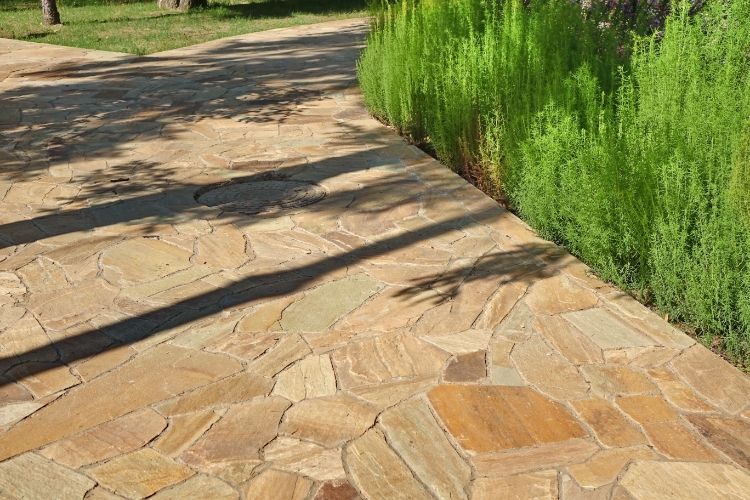
Look and feel
Limestone is flatter and much smoother than sandstone, an appealing choice for stone interior flooring or to revamp driveways. Limestone is also slightly rougher—although this isn't bad—with an orange-peel texture and a natural split surface for grip.
Sandstone has an uneven surface with a rippled feeling under your feet, but it can be made to feel finely grained like limestone. This shot blasting technique gives sandstone grip, slip resistance, and a honed finish for a contemporary feel.
With more textural choices, sandstone paving has more of an edge than limestone, but this is entirely up to you.
Incorporating into designs
Sandstone and limestone can be cut and shaped into pieces, so both are inexpensive to install how you'd like. Both pavers are strong, come in a wide range of colours and finishes, and fit naturally into any space.
Sandstone looks great for renovating a patio or garden path, with options like Indian sand shore circles as a focal point. However, if your aim is a clean look, limestone is a good option for stepping stones, bathrooms, or kitchens, as the slabs can look identical. Black limestone is a universal option for a uniform look that goes with anything.
The verdict? Both limestone and sandstone are great for indoor and outdoor applications. As with all design ideas, this comes down to personal preference.
Unsure of what natural stone pavers will look best? Whether you're pondering a choice for driveways or are looking for an affordable option, Paver Shop supplies pavers to Taylors Lakes, Brunswick, Greenvale, Thomastown and limestone pavers across Melbourne.
Choosing the Right Pavers
How can you decide between sandstone or limestone when planning your outdoor renovation project? Here are some tips to get you started!
What is your decoration style? Are you aiming for something modern for indoor applications? An industrial-style home will suit greys or charcoal pavers, whereas traditional homes benefit from a clay range of pavers.
Think about your home materials and colours. Is it clay brick, rendered, or weatherboard?
What is the size of your space, terrain, and soil type? Do you have clay soil or highly reactive soil?
How much natural light do you have? Does the area meet horizontal surfaces such as garden beds, retaining wall products, or other paved areas?
What is the internal colour scheme of your flooring? Do you have white porcelain tiling?
What are you planning for your outdoor living space? Barbeques?
Do you have any future expansion plans?
All in all, limestone and sandstone are great choices, depending on how you use them. Both are strong, low-maintenance stones that last years under heavy foot traffic and vehicles.
Although limestone is often slightly less pricey, sandstone has more design options. However, you may prefer limestone for your bathroom, kitchen, or interior flooring. In the end, it just depends on what your inner interior designer is planning!
If you want your pavers to last, here's a guide on maintaining pavers, including cleaning and sealing. And when in doubt, always speak to professional tradesmen about caring for your outdoor pavers.
Natural Stone Pavers For Sale – Paver Shop
Can't decide what paver to choose for your upcoming exterior project? With over 20 years of experience as a trade professional in the paving and landscaping industry, we supply and install, provide accessories, and support you with quality natural stone products.
Located in Thomastown, the Paver Shop opened in 2019 and aims to suit your style and needs. Whether you're happy with our wide range of bluestone pavers, granite pavers, travertine pavers, sandstone pavers, limestone pavers, or sandstone pavers, our paving contractors in Melbourne can quote your property or recommend preferred installers.For our "we come to you" service, contact us today at 03 9462 4325 for an appointment
